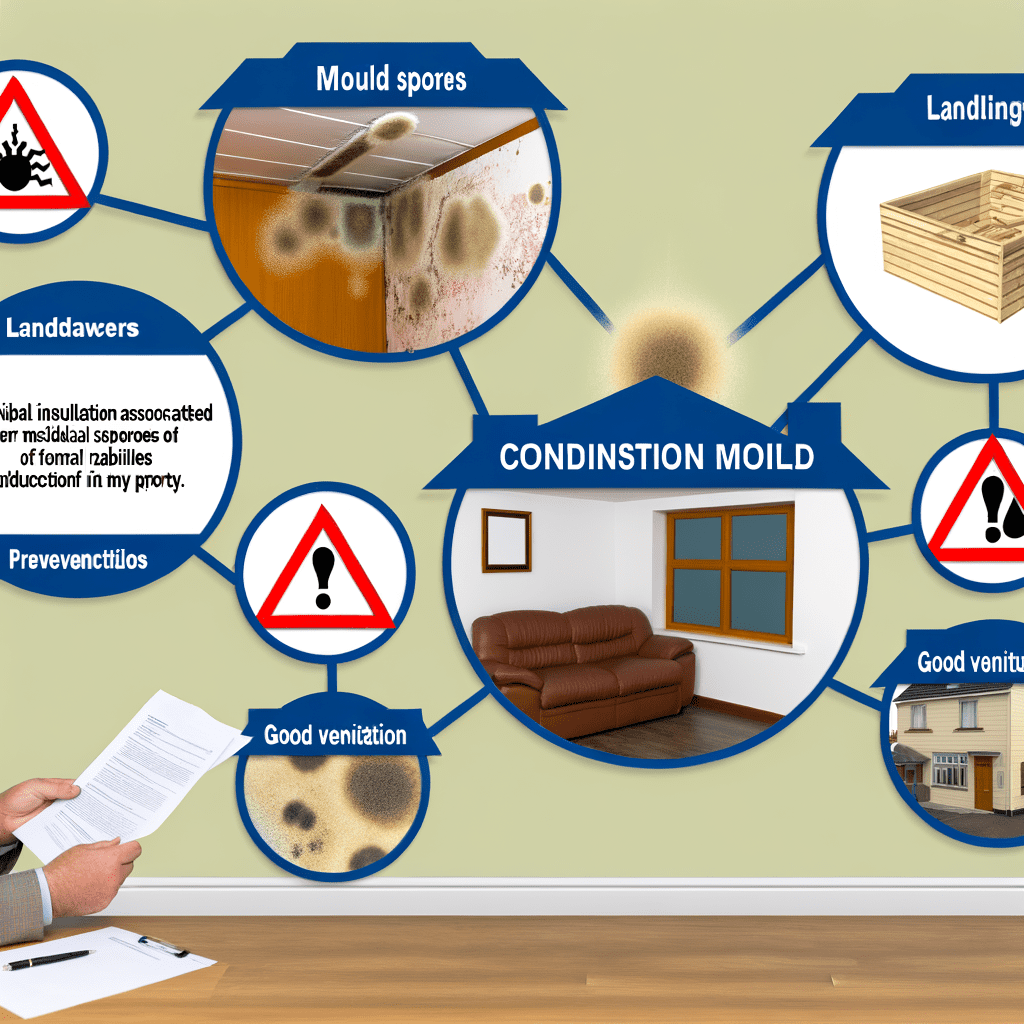A Comprehensive Guide to Condensation Mould: Causes, Prevention and Hazards in Residential Premises
Understanding Condensation Mould
Mould – it’s an unsightly occurrence that no one wants to find in their home. Yet, condensation mould is a common problem in residential premises across the UK. It’s generally caused by excess humidity or moisture within the dwelling, which can occur due to various reasons such as inadequate ventilation, poor heating, lack of thermal insulation and single-glazed windows.
Understanding condensation mould, its root causes and the conditions that foster its proliferation is the first step to preventing its occurrence and managing its potential hazards. For starters, condensation mould often appears as black or green specks on walls, ceilings, and surfaces, flourishing particularly near windows, corners and behind furniture. It is coupled with a musty smell that is hard to ignore.
The Causes of Condensation Mould
Often, the root cause of condensation mould in homes stems from daily activities like cooking, bathing, or drying clothes indoors, which release moisture into the surrounding air. However, condensation mould does not arise from moisture alone. Instead, it occurs when this moist, warm air comes into contact with a cold surface, like a window or exterior wall, causing the water vapour to condense into liquid droplets.
Poor ventilation aggravates the problem, allowing the moisture-laden air to linger indoors and form ideal conditions for mould growth. Similarly, lack of adequate heating can lead to colder surfaces in the house, promoting condensation. Single-glazed windows and a lack of thermal insulation may also make certain areas of the home particularly vulnerable to becoming mould infestations.
Dangers of Condensation Mould: Introducing Mycotoxins
As much as condensation mould can affect the aesthetics of a property, the bigger issue lies in the health risks associated with prolonged exposure. This is particularly true with the presence of mycotoxins – toxic compounds produced by certain mould species.
Mycotoxins can pose severe health threats. They can cause allergic reactions, respiratory issues, and in severe or prolonged cases, can even cause harm to the immune and neurological systems. Sadly, these effects can be exacerbated in individuals with pre-existing conditions, children, the elderly, and those with weakened immune systems.
Landlords’ Liabilities Concerning Mould
Landlords have a legal obligation to ensure that their properties are habitable and safe for tenants. This includes guaranteeing that the premises are free from any significant health hazards, including damp and mould.
It is essential that landlords promptly address any reported issues concerning mould. Failure to do so may leave landlords liable for any resultant health complications suffered by the occupants. This can lead to substantial financial penalties, not to mention tarnish their reputation among potential future tenants.
Furthermore, landlords have a responsibility to educate tenants about preventing mould growth, particularly in terms of effectively using heating and ventilation systems to avoid excess moisture.
Prevention Measures to Combat Condensation Mould
Landlords and homeowners alike can adopt several measures to prevent the onset of condensation mould. Firstly, investing in effective heating systems can prevent cold surfaces where condensation can occur. Consistent heating, especially during colder months, can make a significant difference.
Thermal insulation can further aid in maintaining a property’s internal temperature, reducing the risk of condensation. Similarly, the use of double-glazed windows can prevent the windows becoming a cold surface for condensation.
Ventilation is equally vital in mould prevention. Regularly airing out the property, particularly high-moisture rooms like the kitchen and bathroom, can significantly reduce the humidity levels indoors.
Condensation mould can be a persistent problem, but with a solid understanding of its causes, potential hazards and prevention techniques, homeowners and landlords can tackle it effectively.
At Flettons, we’re committed to safeguarding your investment. When considering a property purchase, trust our seasoned expertise to reveal any hidden threats. For a thorough building survey, get your instant quote through our quote calculator or reach out directly at 0203 691 0451. Your home’s safety is our top priority.
————————————————————————

